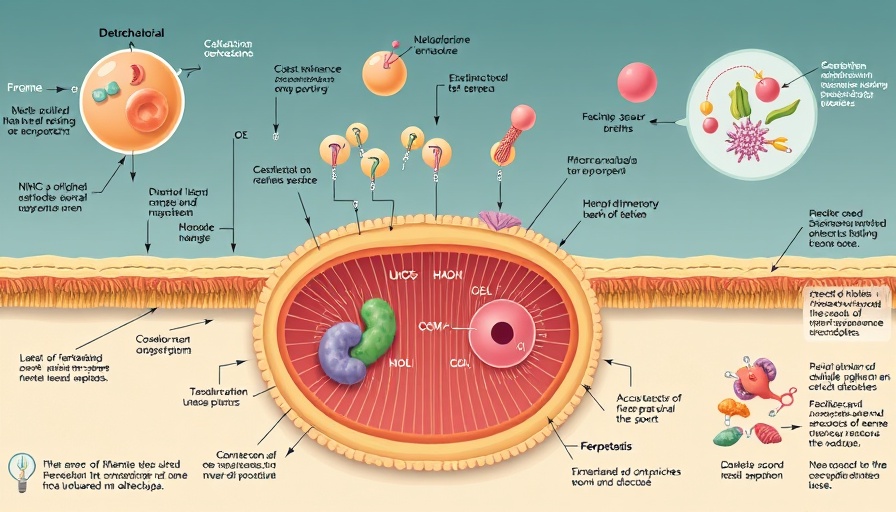
Unveiling the Role of Deep Learning in Cataract Management
In recent years, deep learning (DL) technology has emerged as a transformative force in the medical field, particularly in ophthalmology. The application of DL in cataract management is nothing short of revolutionary, offering advanced diagnostic and predictive capabilities that promise to enhance patient care dramatically. By employing sophisticated algorithms such as convolutional neural networks (CNNs), DL can significantly improve the identification and grading of cataracts based on imaging data, providing diagnostic accuracy that rivals, and in some cases surpasses, that of human experts.
Understanding Cataract: A Major Global Health Issue
Cataracts remain the leading cause of blindness worldwide, underscoring the urgency of addressing this debilitating condition. With the World Health Organization's objective to reduce global blindness, DL technologies are positioning themselves as critical tools in this fight. The potential for DL to standardize diagnostics and optimize treatment pathways could particularly benefit low-income populations in developing regions, where access to quality medical care is often limited.
Deep Learning's Capabilities: Beyond Diagnostics
Beyond merely diagnosing cataracts, DL has penetrated various facets of surgical management, including real-time analysis of surgical videos. This innovative approach enables precise tracking of surgical instruments, aiming to minimize human error during procedures. Furthermore, DL's role extends to outcomes prediction, where algorithms can calculate intraocular lens (IOL) power with enhanced accuracy and estimate potential complications post-surgery. This comprehensive management approach not only streamlines procedures but also bolsters surgical outcomes, contributing to the overall reduction of patient morbidity.
Challenges Ahead: Addressing Clinical Bottlenecks
Despite the promising advancements in DL for cataract management, several challenges remain. The lack of standardized data, the opaque nature of many DL models, and ethical concerns regarding patient privacy pose significant hurdles to clinical implementation. Advances in multimodal data fusion and federated learning are essential for enhancing the generalizability of these models. Incorporating interpretable designs—like Grad-CAM—will also be crucial in transforming DL from a 'black box' into a transparent decision-making tool in the medical domain.
Future Directions: The Path to Transparency in Medical AI
Looking ahead, the evolution of DL in cataract treatment hinges on developing more interpretable systems that can be trusted by healthcare professionals. As transparency increases, so too will the acceptance of AI within clinical settings. Such advancements could not only optimize the cataract management process but also serve as a model for integrating similar DL technologies in other medical fields.
Enhancing Cellular Health: Broader Implications of Regenerative Medicine
The incorporation of DL in cataract management is not merely a technological advancement but resonates with broader themes in health science, particularly cellular rejuvenation and regenerative medicine. As we enhance diagnostic and treatment mechanisms for conditions like cataracts, we simultaneously cultivate a richer understanding of cellular health. Techniques rooted in cellular repair and rejuvenation can parallel the advancements in DL, crafting a holistic approach to maintaining long-term vitality—from augmenting mitochondrial function to utilizing NAD+ boosters for cellular renewal.
Deep learning's burgeoning role in cataract management opens doors for exploration into how these algorithms can enhance other areas of health, suggesting a future where technology and biology converge to foster holistic and regenerative medical practices. As these industries collaborate, insights into mechanisms that drive anti-aging processes may reveal additional therapeutic avenues, enriching our understanding of health beyond just treating conditions.
Final Thoughts: Engaging in Preventative Care
The integration of deep learning into cataract management illustrates a promising frontier in ocular health. However, as health-conscious individuals, it is imperative to remain proactive in our wellness journey. By understanding the implications of advancements in regenerative medicine, individuals can better appreciate the importance of regular check-ups, dietary choices, and lifestyle changes that support cellular health and longevity. Understanding deep learning's impact equips you with the insights needed to advocate for more personalized and effective healthcare options in an era where technology and medicine are increasingly intertwined.
 Add Row
Add Row  Add
Add 




 Add Row
Add Row  Add
Add 


Write A Comment